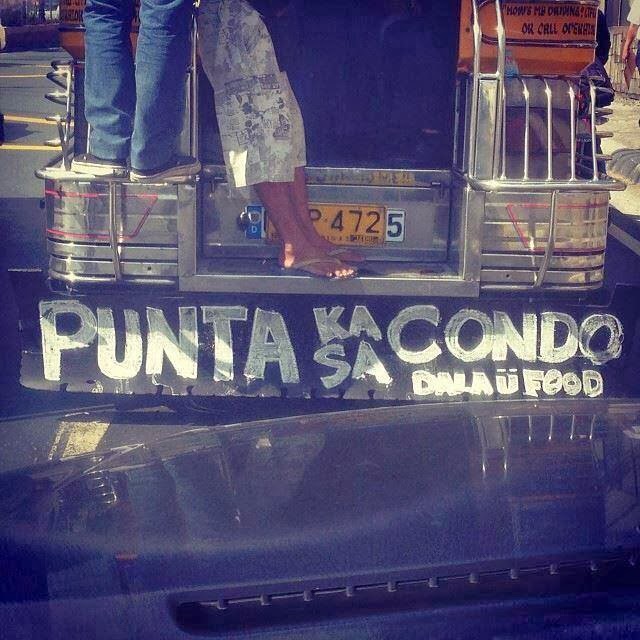Mt. Pinatubo explosion in 1991 was the biggest volcanic eruption of the last century in the whole planet. Some 10 or 11 (or more?) cubic kilometers of earth materials were thrown into the sky and fell down as ashfall, hot rocks, sand, dust, etc. Instant destruction then was huge, hundreds of thousands of hectares of farm lands, residential and commercial areas, were covered by ashfall. Many houses and structures were knocked down by the heavy ashfall that came back to the ground.
Another destruction followed months and years later, via lahar (mud, sand + water) that came down the slope of the mountain-volcano, the various rivers in Pampanga, Tarlac and Zambales provinces.
I belonged to the Congress Mountaineers then, formed in 1993 when I was still working at the House of Representatives. We have climbed many mountains in the country then -- Mt. Apo in Davao, (higher mountain in the Philippines), Mt. Pulag in Benguet-Ifugao (2nd highest mountain), Mt. Halcon in Mindoro, Mt. Kitanglad in Bukidnon, Mt. Hibok-hibok in Camiguin, Mt. Banahaw in Quezon, Mt. Makiling in Laguna, Mr. Maculot in Batangas, Mt. Arayat in Pampanga, etc.
Climbing Mt. Pinatubo's crater was a cool and challenging idea then, thought by our team leader, Jules. Around October 1994, a Pinatubo climb was co-sponsored by the Department of Tourism (DOT) Region 3 office, to promote adventure tourism of the volcano. It was billed to be the "First human expedition to reach Pinatubo by foot".
Jules, me, Gene Penas and Calmar Palma, four of us, set out to climb one day ahead of the scheduled climb by a big group of the DOT team. We wanted to surprise them that we were there in the summit by the time they arrive.
Day 1 alone, we got lost, we could not configure our location based on the maps we had. The trails were very tricky, it was like a monster maze. We decided to camp out for the evening and wait for the big group the next day. There were plenty of them, about 16 climbers + 17 Aeta porters with lots of ropes, food, water. The Philippine Air Force (PAF) also supported via air drop of additional food and water. It was also ready to provide assistance should there be a need for an airlift in case of serious injuries among the expedition team members.
It took the big team + four of us 3 days 2 nights to reach the crater summit, then 1 day and 1 night to go back, total of 4D/3N. For us though, it was 5D/4N.
Since we already knew the basic route to the crater summit, Jules dreamed of a "Pinatubo crater traverse" expedition. We would climb from Pampanga side, and go out at Zambales side. There were eight of us then: Jules Calagui, Uly Veloso, Noel Mercado, Rap Rios, Coco Rosa, Gene Penas, Raymond Azanza, and me.
We don't have any of the photos in Pinatubo. It's only this week that Noel posted in facebook some of the hundreds of photos, most of which went to Coco, Jules' ex-wife, and I heard that Coco is not in the mood to share the photos to anyone of us. I hope this is not true.
The beach of the crater lake, Pampanga side. We brought tire interiors, a rubber boat, inflator, etc. so we can go to the other side. Uly being a swimmer, swam the lake from Pampanga to Zambales side.

Our plan was 3D/2N to reach the crater summit, Pampanga side, then 2D/2N to go down and exit at Botolan, Zambales, total 5D/4N. But things were more complicated, more dangerous than what we anticipated. Especially the descent on the crater, going down on a wall of semi-hard surface, it was very dangerous. So we climbed December 27, and hoped that we would be in Botolan town proper December 31 evening, we could take the bus back to Manila and be home for the New Year 1995.
We ended up spending 6D/5N in the mountain-volcano. We arrived Botolan evening of January 1, 1995.
Going down a portion of the crater summit.
From left: Raymond, me, Noel, Gene.
 1: After Deniece gave Vhong oral sex, she french kissed Cedric. The latter got so angry with her smell, so he beat Vhong.
1: After Deniece gave Vhong oral sex, she french kissed Cedric. The latter got so angry with her smell, so he beat Vhong. Some jokes have shifted away from Vhong, gravitating towards Cedric. A new case or reviving an old case, about his tax liabilities with the BIR. BIR Commissioner Kim Henares middle, boxer and Cong. Manny Pacquiao lower photo.
Some jokes have shifted away from Vhong, gravitating towards Cedric. A new case or reviving an old case, about his tax liabilities with the BIR. BIR Commissioner Kim Henares middle, boxer and Cong. Manny Pacquiao lower photo.


























